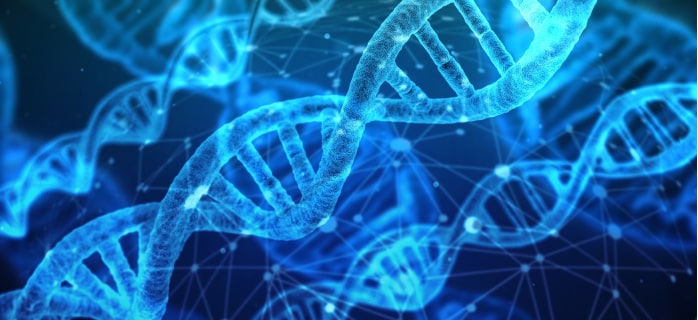Certified equipment of the highest quality for laboratories, clinics, dentistry and other private and public medical institutions
Cystic fibrosis treatment, diagnosis, symptoms, classification. Improving the quality of life

Cystic fibrosis (synonymous with cystic fibrosis, from the English cystic fibrosis) is a hereditary disease that is characterized by a malfunction of the glands with the formation of thick mucus that clogs the excretory ducts of the glands mainly in the lungs, pancreas, liver and intestines. That is why cystic fibrosis manifests itself most often in childhood. The disease is based on a defect (mutation) of the gene. To get sick, a person must inherit a defective gene from both parents, only then the disease will manifest itself. If the gene is passed from only one parent, the disease will not occur, and the person will be the carrier of the defective gene and can pass it on to their children.
In organs such as the lungs, liver, pancreas, and intestines, there are glands that secrete mucus. This is necessary for their normal operation and protection against infection. Normally, the mucus secreted by the glands has good fluidity and does not stagnate. With cystic fibrosis, there is a violation of the transport of chloride ions through the membrane of the cells of the glands, due to which the cells of the glands begin to produce very viscous and thick mucus, which clogs the excretory ducts of the glands and, ultimately, disrupts the functioning of many organs.
So, a large amount of mucus accumulates in the bronchi, which becomes a favorable environment for the reproduction of bacteria, there is a constant cough with purulent sputum. The inflammatory process passes to the wall of the bronchi and the surrounding lung tissue. Areas of bronchial expansion (bronchiectasis) and fibrosis of the lung tissue are formed. With progressive cystic fibrosis, severe respiratory failure develops, which is manifested by shortness of breath.
The pancreas is a glandular organ whose main function is to secrete enzymes to digest food. Due to the formation of thick mucus, the excretory ducts of the gland are clogged, and it cannot secrete enzymes into the intestines. The digestion of food is disturbed, so the patient quickly loses weight, poorly gaining weight. Cystic fibrosis in children is accompanied by a slowdown in the growth and development of the body. Due to a violation of the digestion of food, there may be liquid or mushy stools. Only treatment with special enzyme preparations can normalize digestion. In severe cases, fibrotic changes occur in the pancreas, which can lead to the development of diabetes.
The small intestine also contains a large number of glands that are involved in digestion.When blocking the thick mucus of the output ducts of these glands, digestion in the small intestine occurs, which is accompanied by the same symptoms as in case of damage to the pancreas (see above). When blocking the biliary ducts of the liver, cirrhosis of the liver can develop.
The following forms of cystic fibrosis are distinguished depending on the predominance of certain symptoms:
- bronchus-legged form;
- intestinal form;
- Mixed (pulmonary-wrecking) form.
Symptoms.
They can be diverse, since various organs that have glands in their structure are affected with this disease. In most patients, symptoms appear in early childhood or after birth. In rare cases (with a relatively favorable course of the disease), symptoms may appear in adolescence. More often, cystic fibrosis in adults is diagnosed. Symptoms, as a rule, progress over time.
The most frequent symptoms of cystic fibrosis:
- lag in growth and mass from peers;
- prolonged cough, most often with sputum (wet cough); Sometimes in sputum there may be an admixture of blood (hemoptysis);
- labored breathing;
- wheezing in the chest during breathing;
- frequent infections of the lungs and subordinate sinuses (sinusitis, frontitis, ethmoiditis);
- “The salty taste of the skin” (parents can feel this taste when they kiss their child);
- pain in the right hypochondrium (in the area of the gallbladder);
- frequent liquid stools (diarrhea), there are less often constipation;
- Kashitsa or liquid feces, which is poorly washed off (“seems fat”), has a sharp unpleasant odor;
- Infertility (a woman cannot get pregnant, a man cannot have children).
Diagnostics.
If you or your close relatives have symptoms suspicious of cystic fibrosis, it is necessary to conduct an examination to confirm or exclude this disease. The examination can be appointed by your attending doctor.
There are several tests for the diagnosis of this disease:
- Smile test (determination of sweat chlorides). During this test, a special drug is applied to the surface of the skin, which causes increased sweating. Subsequently, the amount of salt (chlorides) in sweat is measured. With cystic fibrosis, the level of sweat chloride is higher than normal values.
- Genetic testing. The presence of defective genes can be determined, it is enough to take several milliliters of blood for analysis. This research method is more accurate, but also more expensive.
Currently, cystic fibrosis in newborns is well diagnosed. A federal program for testing all newborns for cystic fibrosis has been introduced in the Russian Federation (testing is carried out in a maternity hospital).
Treatment.
Cykovyskidosis is a chronic disease. Currently, there have not been developed methods for a complete cure, but there are effective therapeutic measures that will help you live for a long time.Life expectancy with this disease is less than in healthy people, but regular and proper treatment can significantly reduce the severity of symptoms and prolong life. Therefore, constant contact with your doctor is very important.
There are various approaches to the treatment of patients with this disease. All of them are aimed at reducing the symptoms of the disease and preventing complications. Radical treatment of the disease (complete cure) is currently impossible. Methods of gene therapy (correction of mutant genes) are only being developed and have not yet been introduced into clinical practice. An important achievement in the Russian Federation is that the main drugs for the treatment of patients with cystic fibrosis are provided by the state free of charge.
Treatment of symptoms associated with damage to the organs of the gastrointestinal tract:
- Taking enzyme preparations (preparations that contain special substances necessary for the digestion of food – enzymes). In most cases, these drugs are required to be taken with every meal. Restoration of digestion contributes to the normalization of body weight and growth of the child.
- Compliance with a special diet.
- Taking vitamins.
Treatment of symptoms associated with damage to the respiratory system:
- Antibacterial drugs. They are most often prescribed during an exacerbation. In addition to tablet forms and forms for intravenous and intramuscular administration, special forms of antibiotics have been developed for inhalation through a nebulizer (compressor inhaler). There are also long-term antibiotic regimens.
- Bronchodilators (for example, salbutamol, fenoterol, ipratropium bromide, etc.). The optimal route of administration is inhalation through a nebulizer or metered dose inhaler with a spacer.
- Drugs that reduce the viscosity of bronchial mucus (mucolytics). The best is deoxyribonuclease. The ideal route of administration is inhalation through a nebulizer.
- Physiotherapy of the chest organs. The main goal is the most complete coughing up of mucus (sputum) from the lungs. There are several methods: tapping on the chest, coughing up sputum in various positions of the body. In addition, special devices have been developed for physiotherapy in cystic fibrosis (breathing simulators; devices that facilitate coughing, special vibrating vests, etc.). The attending physician will select the most suitable procedures for you.
- Lung transplant. Lung transplantation is performed only on patients who have a very severe form of the disease and meet certain criteria for lung transplantation. The meaning of the operation is to replace the lungs damaged by the disease with healthy ones (from a donor).
Currently, no more than 10 operations of this kind have been successfully performed in Russia. However, this branch of medicine is developing rapidly.
In patients with a severe course of cystic fibrosis and progressive respiratory failure, shortness of breath occurs and gradually increases. Subsequently, a hypoxemia occurs. This condition requires prolonged therapy with oxygen. The most convenient and cheap way of prolonged oxygen therapy is the use of oxygen concentrators. Long -term treatment with oxygen will reduce shortness of breath, improve the quality of life and increase physical activity. For some patients, prolonged oxygen therapy helped to wait for the long -awaited light transplantation.
How to help a child or an adult with cystic fibrosis feel as good as possible?
If you or your relative are sick with cystic fibrosis, you need:
- Do not allow body weight deficiency. Therefore, ask your treating doctor what products are best used for you to maintain body weight at the optimal level;
- exclude passive smoking (do not allow you to smoke other family members in your house);
- engage in physical exercises (for training of the respiratory system);
- follow all the instructions of the attending physician;
- To prevent frequent infectious exacerbations of the disease, it is necessary to wash your hands more often and discuss with the doctor the possibility of vaccination (infections vaccinations).
Call right now on the phone and get a quality consultation regarding the choice of equipment!


